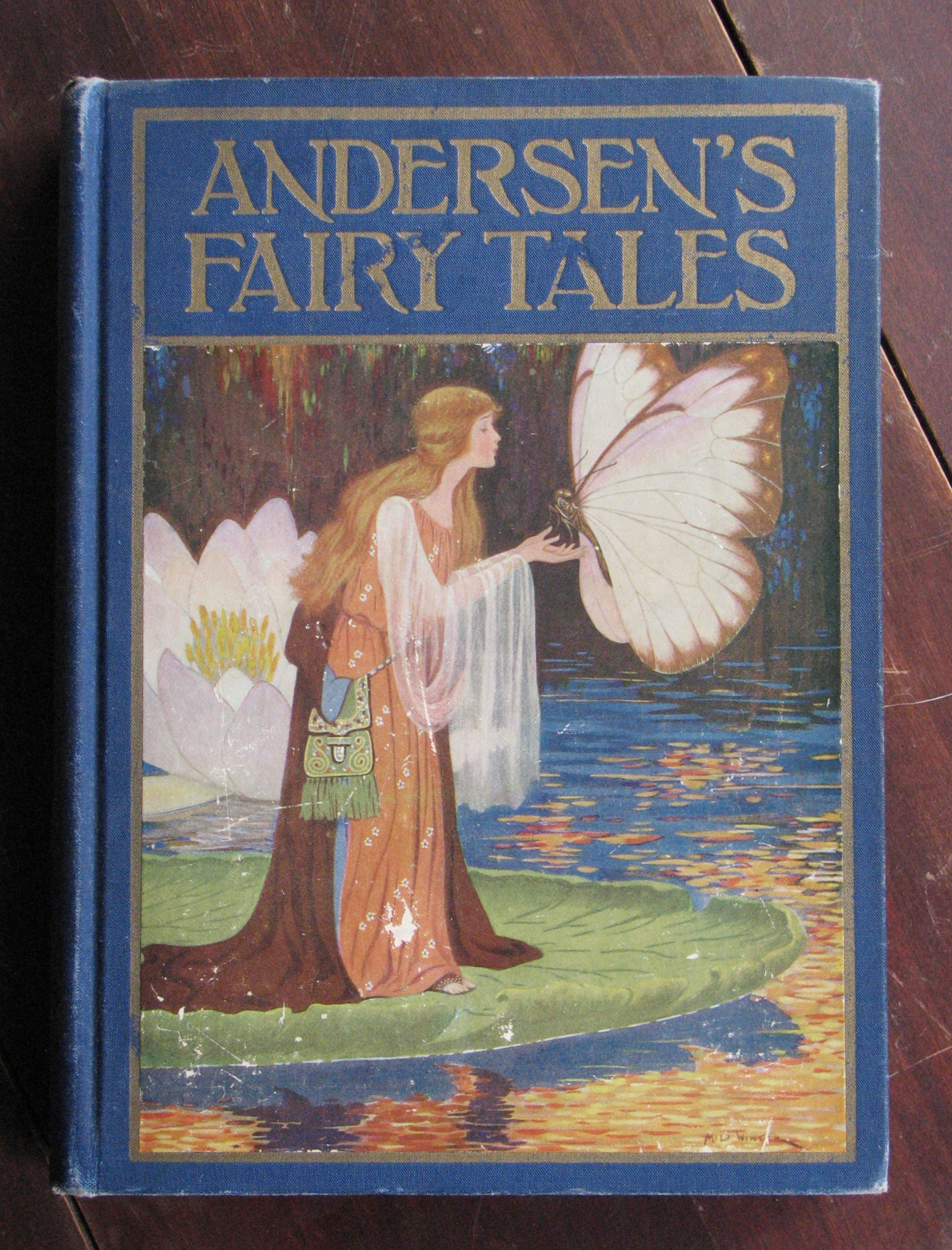"Snow Queen," Elena Ringo
Andersen differs from many other fairy tale collector/authors in that he never claimed to be passing down folklore as he heard from peasants-he is known for writing original stories in the style of traditional fairy tales, but with his own style. Many people don't realize how similar to folklore many of his stories are-he heard many tales in his childhood and/or from literary sources that definitely influenced his writings. For example, "The Little Mermaid" is very similar to Undine by Friedrich de la Motte Fouque, which comes from the tale of Melusine, and both have similarities to mermaid folklore from around Europe.
Ivan Bilibin
In his essay "Hans Christian Andersen's Use of Folktales," (which can be found in A Companion to the Fairy Tale) Bengt Holbek laments the fact that so few people have bothered to trace the folktales Andersen was probably familiar with and analyze the significance of the changes he made in his own stories. People do this all the time with the Grimms-how their tales were altered from the versions they heard to become more appropriate for children in their society; references to sexuality were removed, but violence was allowed as long as it was to punish a villain (modern fairy tales aimed at children tend to remove all violence as well).
"The Tinder Box," H.J. Ford
In this aspect Andersen did the same. Andersen was specifically writing for children, unlike most oral folktales which were shared among adults. For example, in his story "The Tinder Box," the hero summons a large magical dog that will do his bidding, and each night has them bring the beautiful princess to him, where he kisses her. In related tale "Lazy Hans", the hero has the princess brought to him every night for eight years, giving her three children before he is discovered.
No one is probably that shocked by this-given standards for children's literature in his time and our own. However, Holbek asserts that Andersen completely misunderstood the point of fairy tales in general. His theory is that all fairy tales are boiled down to relationship tensions, and in three categories-youths to adults (often children to parents), those of low status to high, and male to female. Fairy tales often address very tough issues, those that are generally considered taboo, but they are slightly veiled in the traditional fairy tale formula. That is why so many fairy tales involve abuse/abandonment of children, incest, and of course, marriage. Many of the fairy tale villains are thought to represent people in these categories-the witch can be seen as a different side of the mother, the ogre the more frightening (or incestuous) side of the father, etc.
Andersen will often abandon the symbolic interpretations of fairy tale characters and themes. Instead he loves to add detailed descriptions of the scenes or unrelated episodes, which I think of as being equivalent to modern Hollywood impressing us with special affects and adding epic battle scenes, as if the plot itself wasn't good enough to hold an audience. Plus, like a visual movie will do, it plants a more specific vision in your mind about that fairy tale and what it means, rather than the oral tale which can be given so many potential meanings to the listener.
"Steadfast Tin Soldier," Kay Nielsen
Not that Andersen's stories don't have symbolic meaning, this is Holbek's analysis of what happened specifically to the folktales Andersen worked with. In fact I think what tends to strike me most about Andersen's writing is how many of his stories seem to carry such contradictory messages. From the stories like "Girl Who Trod on a Loaf" and "Red Shoes" that revel in punishing females for their sins and seem so misogynist, to stories like "Snow Queen" that feature female characters that even make modern feminists happy; some of his stories are so full of hope, like "Wild Swans" and "Ugly Duckling," but others end in utter despair and hopelessness, like "Steadfast Tin Soldier" and "Little Mermaid" (the ending of which is ambiguous enough, but apparently the original version was supposed to end just with the mermaid turning into sea foam, and Andersen's publishers thought that too dark and had him add a more positive ending).
Margaret Tarrant
Andersen himself was such a complex, interesting man, and I feel like I really need to read more about his life to shed more light on his writings. I couldn't get through his autobiography but I think a well-written biography would be fascinating.







Hope this isn't a repeat post (tech issues). Just wanted to say I greatly enjoyed this post, learned much, and love your writing style. Kudos and cheers!
ReplyDeleteThank you so much! Glad you enjoyed it!
DeleteYou know, when I was a child watching a fairly-accurate animated rendition of 'The Little Mermaid', I thought that becoming sea foam after you died in exchange for eternal youth was a pretty good bargain! This despite years of coerced church and Sunday School attendance at a mainline denomination Protestant church.
ReplyDeleteOr perhaps because of it, now that I think about it...